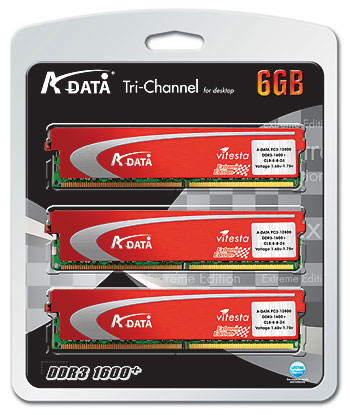If you're thinking of carrying out a Core i7 upgrade later this year, you're probably going to want an X58 motherboard, a CPU cooler that supports socket LGA1366, and some of that tri-channel DDR3 goodness.
On the DDR3-front, some of the first tri-channel kits to be branded as "ready for X58 motherboards" have come from Taiwan-based A-DATA.
It's today announcing production of DDR3 1600 and DDR 1333 tri-channel kits in 3GB and 6GB capacities. It expects availability in this quarter, with prices starting from $230.

The DDR 1600Mhz kit has been tested in tri-channel configuration with latency settings of 8-8-8-24 2T. The 1333MHz kit has been verified at 7-7-7-20 2T.
A-DATA's recommended retail price for the quicker DDR3 1600 kits is $230 for the 3GB model (3x1GB) and $350 for the 6GB model (3x2GB).
Official press release: Tri-Channel Kits ready for X58 motherboards













